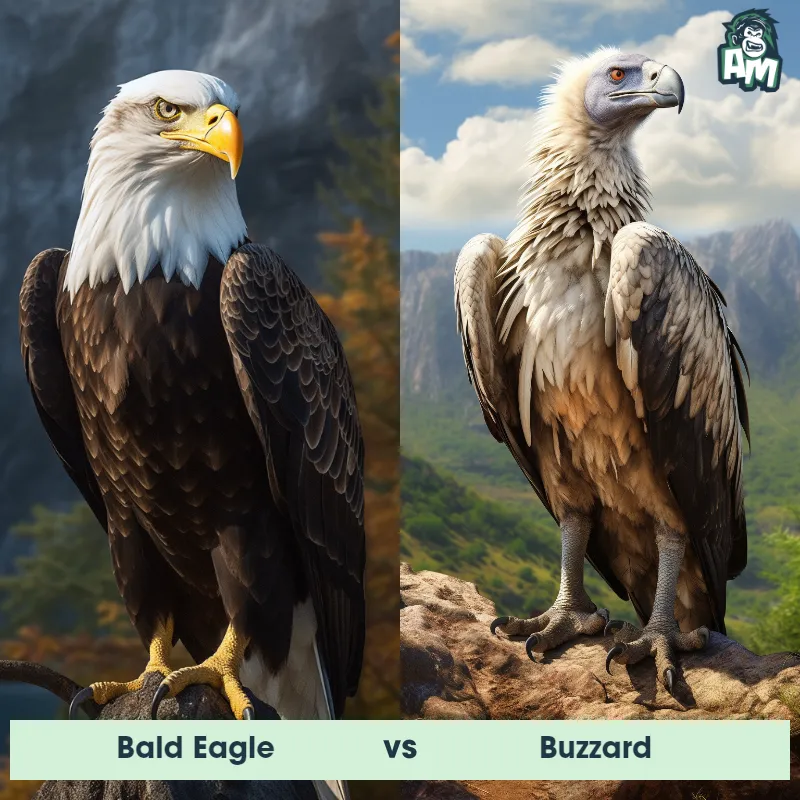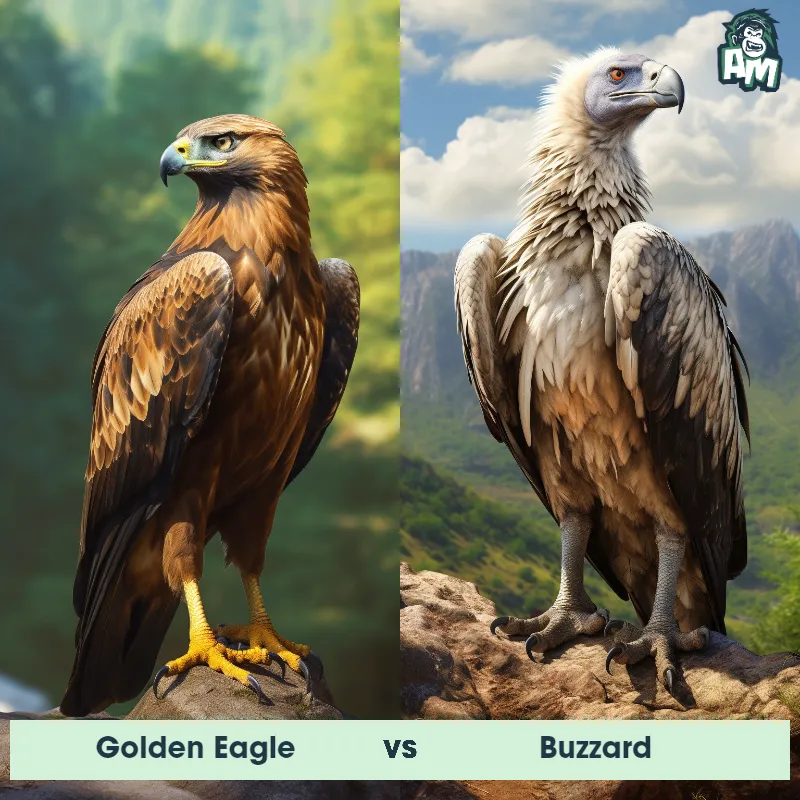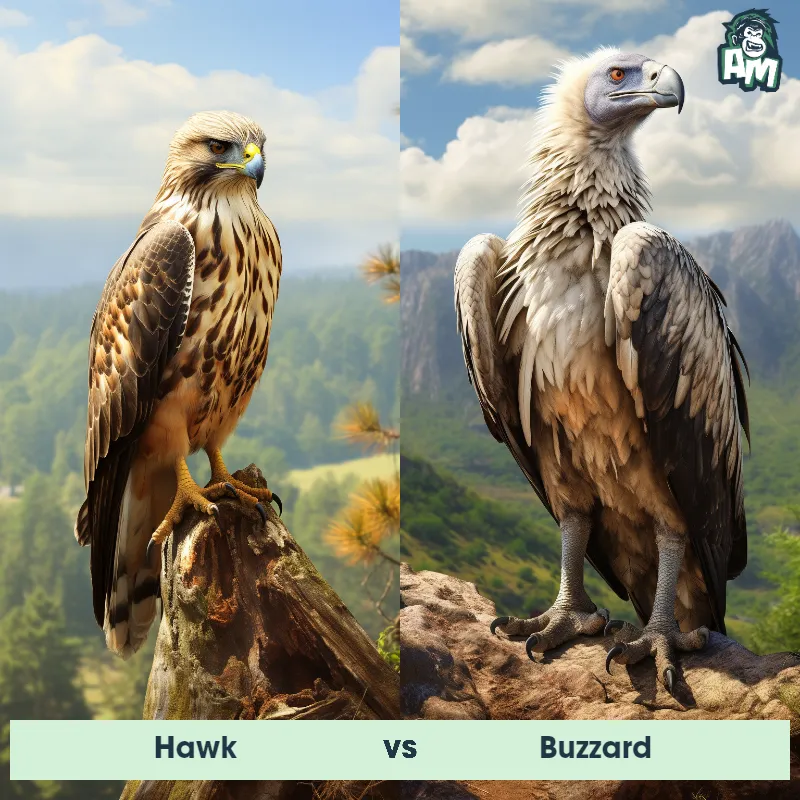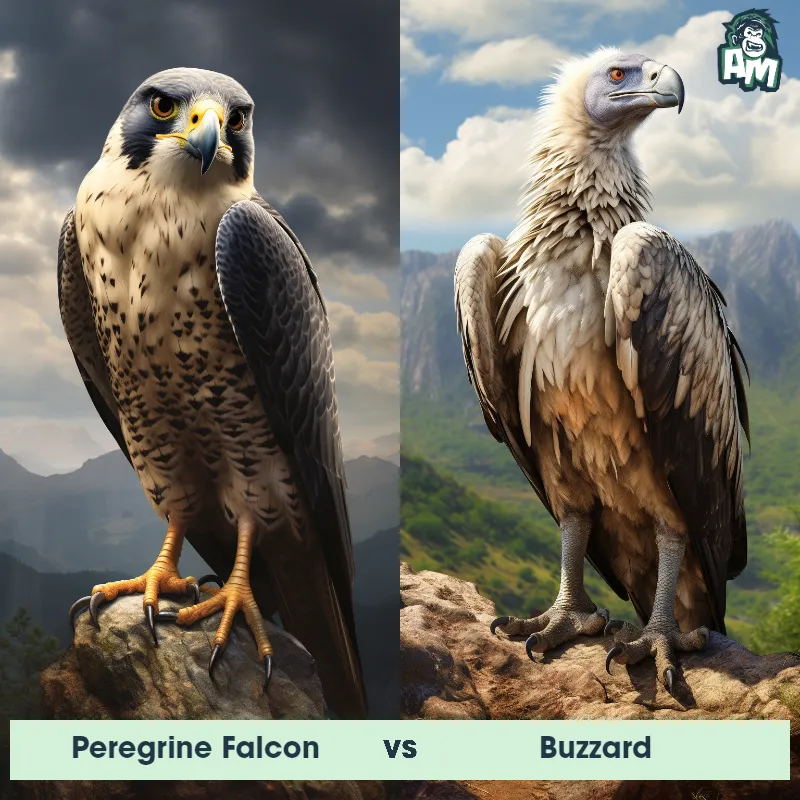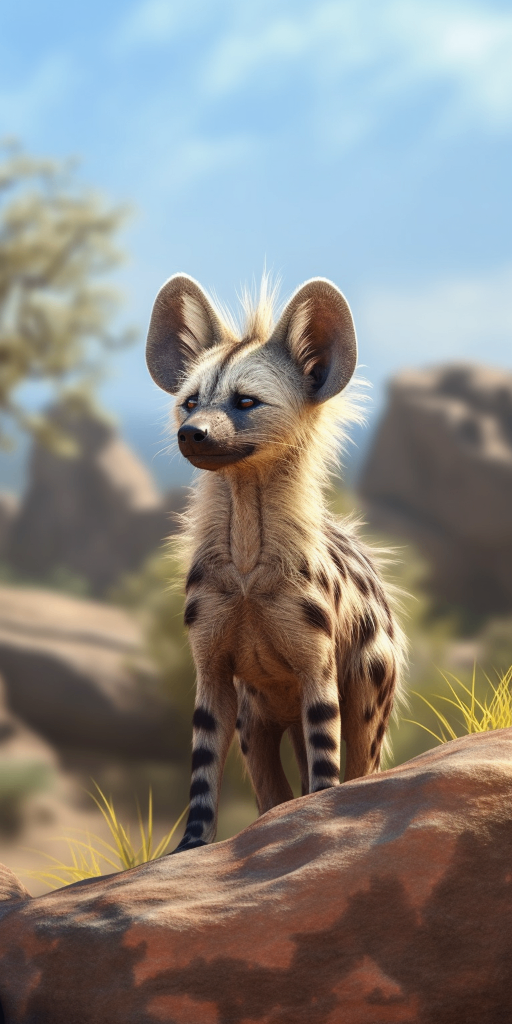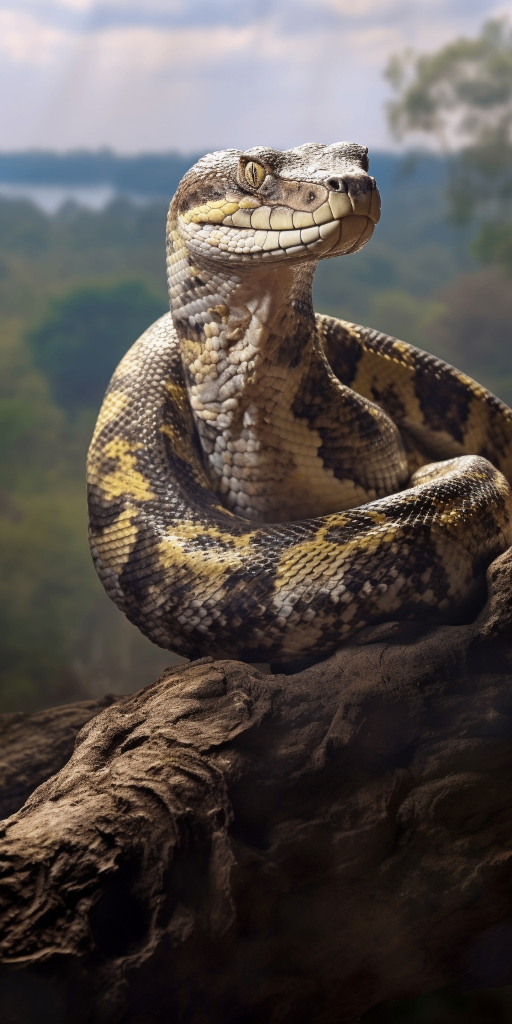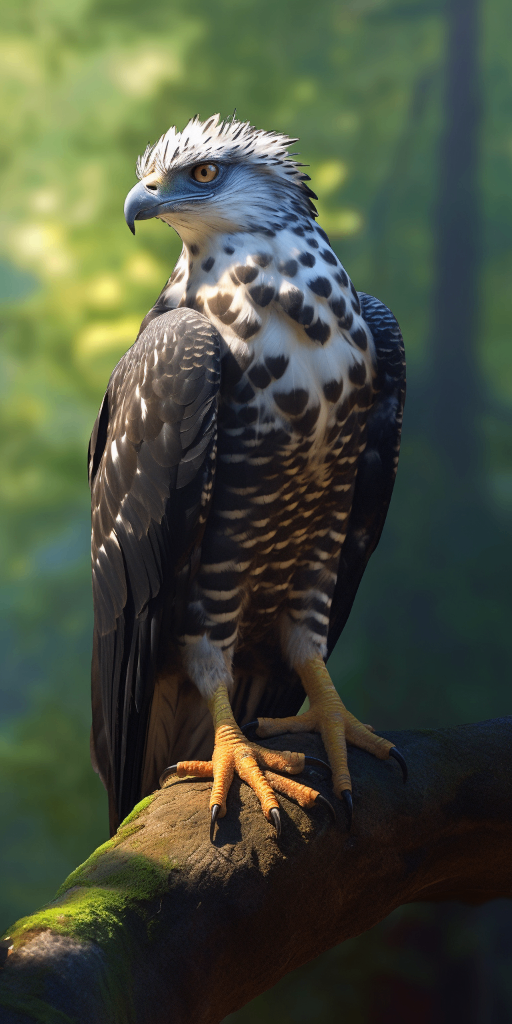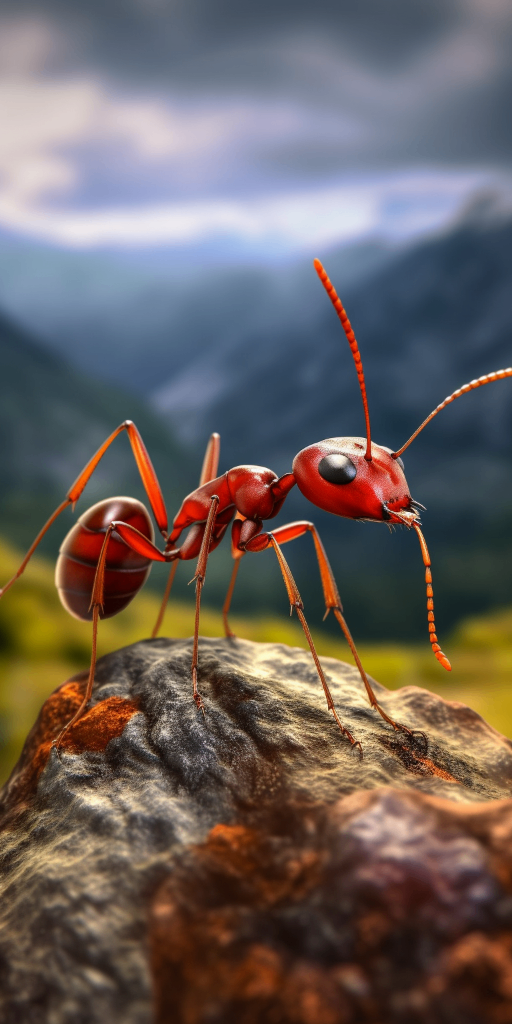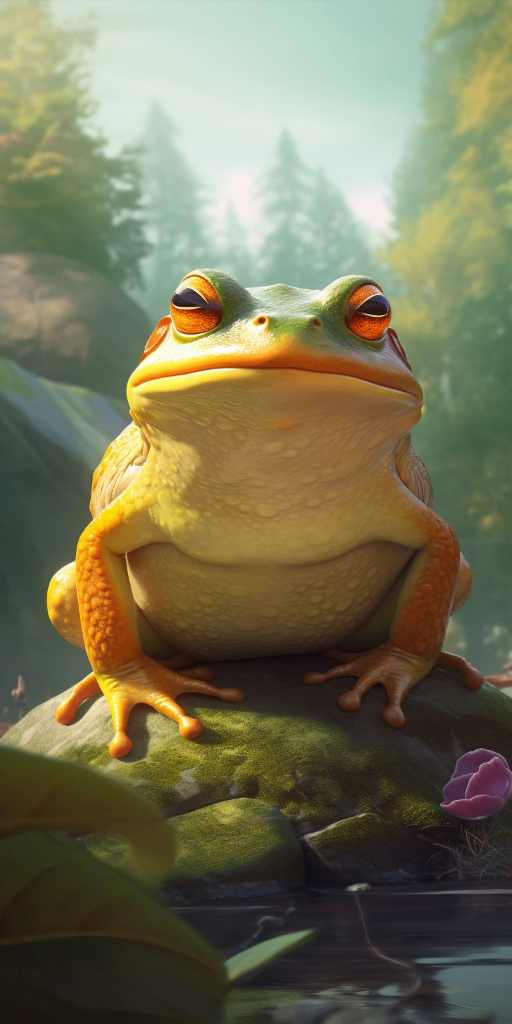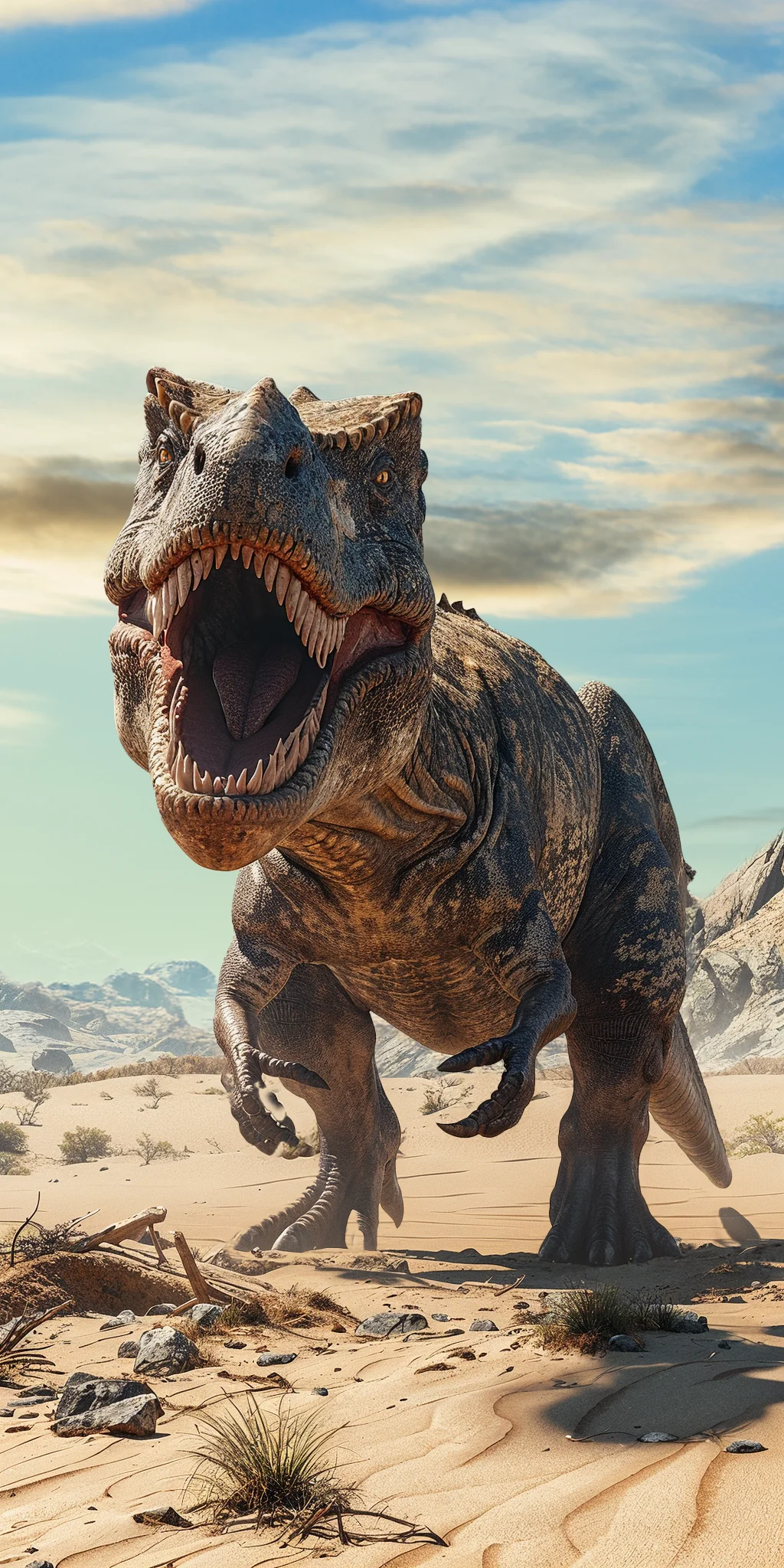The Buzzard
The buzzard, also known as the common buzzard, is a medium-sized bird of prey found in Europe, Asia, and North Africa. It has a wingspan of around 120-140 centimeters and typically weighs between 600-1,400 grams. With its broad wings and a short tail, the buzzard soars gracefully in the sky. It has a brown body, with a paler underside and prominent dark patches on its wings. This bird is known for its sharp vision and agile flight, allowing it to hunt a variety of prey, including small mammals, birds, and reptiles. The buzzard is also characterized by its high-pitched call, which it uses to communicate and establish territories.
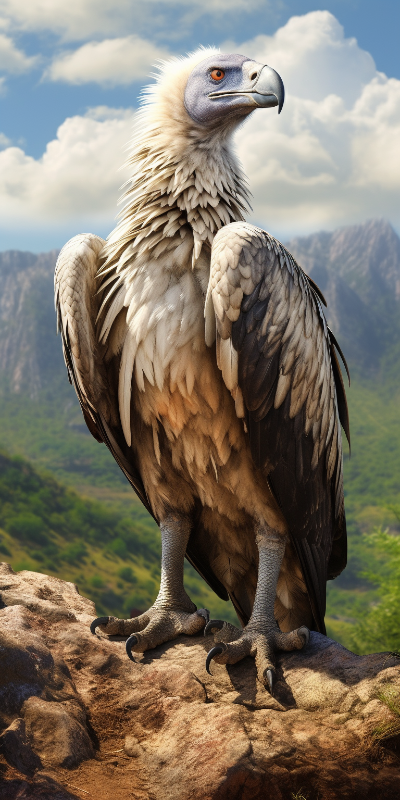
| Buzzard | |
|---|---|
| Size | 16-22 inches (40-55 cm) |
| Weight | 1.3-2.9 lbs (0.6-1.3 kg) |
| Speed | 150mph (241km/h) |
| Key Strength | Sharp talons and hooked beak |
| Biggest Weakness | Relatively slow flight speed |
| Scientific Name | Buteo buteo |
| Family | Accipitridae |
| Habitat | Woodlands, marshes, and fields |
| Geography | Europe and parts of Asia |
| Diet | Small mammals, birds, carrion, earthworms, and large insects |
| Lifespan | 10 years - 25 years |

The Buzzard
The buzzard, also known as the common buzzard, is a medium-sized bird of prey found in Europe, Asia, and North Africa. It has a wingspan of around 120-140 centimeters and typically weighs between 600-1,400 grams. With its broad wings and a short tail, the buzzard soars gracefully in the sky. It has a brown body, with a paler underside and prominent dark patches on its wings. This bird is known for its sharp vision and agile flight, allowing it to hunt a variety of prey, including small mammals, birds, and reptiles. The buzzard is also characterized by its high-pitched call, which it uses to communicate and establish territories.
Fun Fact: Buzzards are known for their exceptional longevity, with some individuals living up to 25 years in the wild, making them one of the longest-living bird species.
| Buzzard | |
|---|---|
| Size | 16-22 inches (40-55 cm) |
| Weight | 1.3-2.9 lbs (0.6-1.3 kg) |
| Speed | 150mph (241km/h) |
| Key Strength | Sharp talons and hooked beak |
| Biggest Weakness | Relatively slow flight speed |
| Scientific Name | Buteo buteo |
| Family | Accipitridae |
| Habitat | Woodlands, marshes, and fields |
| Geography | Europe and parts of Asia |
| Diet | Small mammals, birds, carrion, earthworms, and large insects |
| Lifespan | 10 years - 25 years |
Buzzard Matchups
We use AI to simulate matchups between the Buzzard and other animals. Our simulation considers size, strength, and natural predatory behaviors to determine the most likely outcome.

Can't find the Matchup you want?
Create Your Own MatchupBuzzard: Diet, Predators, Aggression, and Defensive Behaviors
What do Buzzards eat?
Buzzards are scavengers and primarily feed on carrion, such as dead animals. They also consume insects, reptiles, small mammals, and occasionally fruits and vegetables. They play a crucial role in the ecosystem by helping to clean up dead animals and prevent the spread of disease.
Do Buzzards have any predators?
While adult Buzzards do not have many natural predators, their eggs and young may be vulnerable to predators such as owls, hawks, eagles, and raccoons. However, adult Buzzards can defend themselves and their nests against most predators with their sharp talons and beaks.
Are Buzzards aggressive?
Buzzards are not typically aggressive towards humans or other animals unless they feel threatened or their nest is in danger. They will often display defensive behaviors, such as puffing up their feathers and emitting warning calls, to ward off potential threats.
Do Buzzards fight?
Buzzards may fight with other animals over food resources or territory. These territorial disputes are usually resolved through displays of dominance, such as aerial acrobatics, vocalizations, and physical posturing. In rare cases, physical fights can break out between rival Buzzards.
How do Buzzards defend themselves?
Buzzards have several defense mechanisms to protect themselves from predators and threats. They can fly away quickly to escape danger, and their sharp talons and strong beaks can be used to fend off attackers. Buzzards may also rely on camouflage to blend into their surroundings and avoid detection.
What is the biggest weakness of Buzzards in a fight?
Despite their formidable talons and beaks, Buzzards have relatively low stamina compared to other birds of prey. In a prolonged fight or chase, Buzzards may become fatigued and vulnerable to stronger or more agile predators. Additionally, Buzzards are more adept at scavenging and hunting than engaging in physical combat, making them less equipped for direct confrontation with powerful adversaries.
Fun Fact: Unlike other birds of prey, buzzards have a unique hunting strategy known as 'kiting', where they hover in the air facing the wind, scanning the ground below for potential prey. This technique allows them to conserve energy while searching for food.
Fun Fact: Buzzards play a crucial role in the ecosystem as they act as nature's waste disposal units, feeding on carrion and controlling the population of dead animals. This helps to prevent the spread of diseases and keeps the environment clean.



